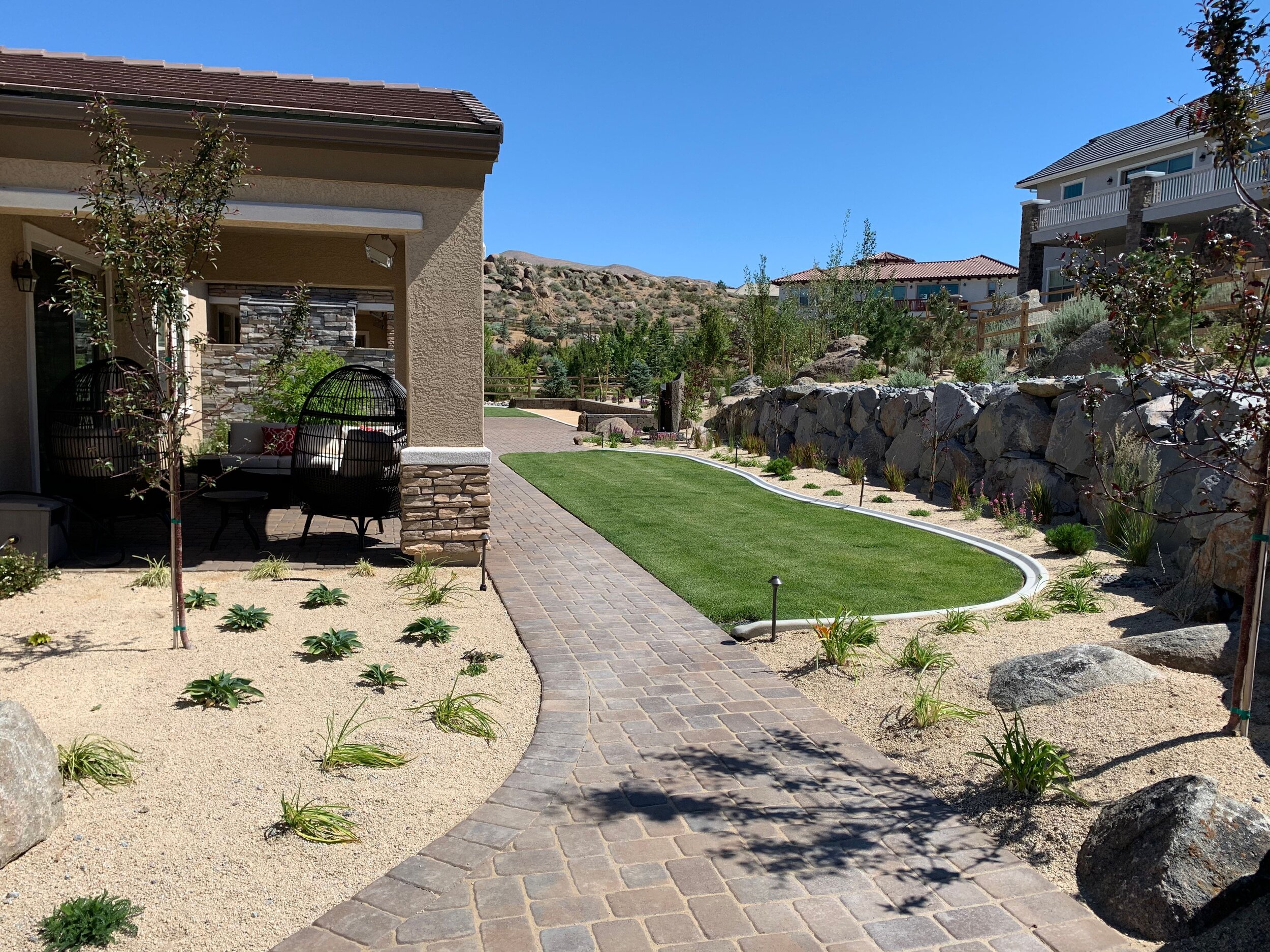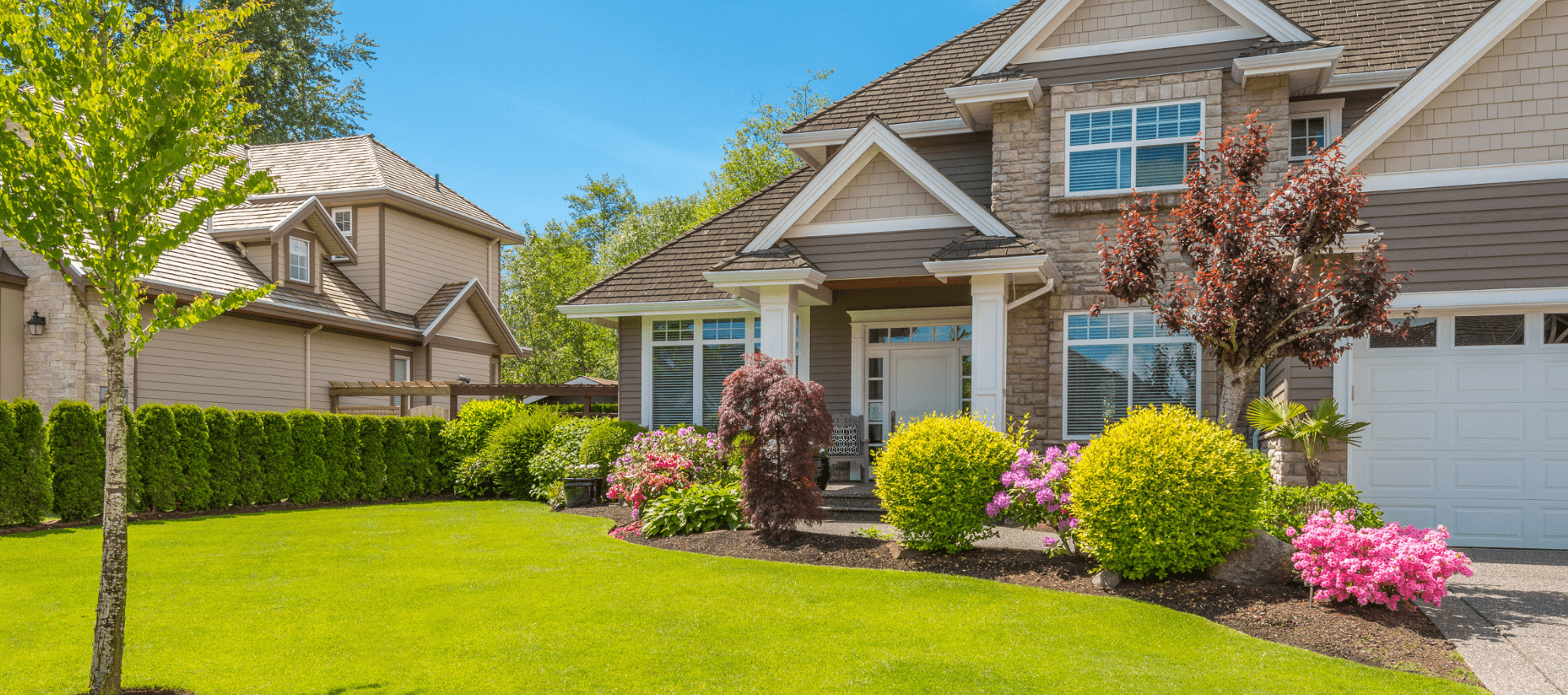Elevate Your Residential or commercial property's Aesthetic With Sustainable Landscape Design Styles and Eco-Friendly Practices

Advantages of Sustainable Landscaping
Executing sustainable landscape design techniques not just preserves natural resources yet additionally promotes biodiversity and enhances total environmental health and wellness. By selecting eco-friendly landscape design strategies, homeowner can enjoy a plethora of benefits that expand beyond simply aesthetic appeal. One substantial advantage is the reduction of water consumption with the usage of drought-resistant plants, rain yards, and efficient irrigation systems. This not only decreases energy bills yet likewise adds to water conservation initiatives in the area.
Additionally, lasting landscaping can improve dirt health and wellness by minimizing using chemical fertilizers and chemicals, thereby producing a much healthier atmosphere for plant growth and advantageous dirt organisms. This, consequently, enhances the total strength of the landscape to stand up to ecological stress factors and climate change influences - bush removal Jacksonville. In addition, sustainable landscaping techniques can draw in diverse wild animals, consisting of pollinators like butterflies and bees, fostering an extra vivid and well balanced ecological community within the residential or commercial property
Incorporating Indigenous Plants
To build on the benefits of sustainable landscaping, a strategic focus on integrating native plants can even more enhance eco-friendly resilience and promote biodiversity within the landscape. Native plants are types that normally happen in a specific location and have developed to thrive in the local climate, soil problems, and community. By including native plants in landscape design designs, homeowner can lower water use, reduce the demand for chemical pesticides and fertilizers, and sustain the regional wild animals population.
Including indigenous plants likewise helps in protecting the special personality and identification of an area's flora. These plants commonly need less upkeep when established, making them a lasting and cost-effective landscaping solution over time. Furthermore, indigenous plants can draw in native pollinators like butterflies and , contributing to the overall health of the environment.
When choosing native plants for landscaping tasks, it is vital to choose types that are well-suited to the particular environmental conditions of the website. Consulting with organic gardens or regional baby rooms can provide important guidance on choosing the right native plants for a particular location. By incorporating native plants into landscape design layouts, homeowner can develop gorgeous, sustainable outdoor spaces that benefit Read Full Article both the neighborhood and the environment.

Water Conservation Methods
Efficient watering methods play an essential duty in lasting landscaping methods, ensuring optimal water preservation initiatives in exterior spaces. Executing strategies such as drip watering, rainwater harvesting, and clever watering systems can dramatically reduce water waste while maintaining a healthy landscape. Drip irrigation delivers water directly to the origins of plants, reducing dissipation and overflow. Rain gathering entails accumulating rain from roofing systems and keeping it for later use in irrigation, reducing the dependence on local water sources. Smart irrigation systems use weather data and dirt wetness levels to readjust sprinkling timetables, stopping overwatering and promoting water performance.
In enhancement to sophisticated watering approaches, xeriscaping is one more water-saving landscaping strategy that focuses on utilizing drought-resistant plants, mulch, and efficient watering to develop a low-water landscape layout - landscaping company Jacksonville. By selecting indigenous plants that are well-suited to the local environment and soil problems, home proprietors can reduce the read review requirement for extreme watering, eventually preserving water and advertising a lasting outside atmosphere
Eco-Friendly Hardscaping Ideas
Enhancing outdoor rooms with eco-friendly hardscaping functions can add significantly to sustainable landscape design practices. Opt for products like redeemed wood, recycled concrete, or all-natural stone to decrease ecological effect when considering hardscaping elements. These materials not only include a special visual interest your outside space yet additionally minimize the demand for brand-new resources extraction.
Implementing absorptive leading choices such as gravel or absorptive concrete can assist lower water runoff and promote groundwater recharge. These choices permit rainwater to permeate right into the ground, stopping erosion and lessening the problem on stormwater systems.
Integrating indigenous plants into hardscaping styles can better improve eco-friendliness by sustaining neighborhood wildlife and minimizing the demand for excessive watering or chemical treatments. By integrating green wall surfaces or upright yards, you can present more greenery right into urban settings, enhancing air high quality and biodiversity.
Integrating energy-efficient lighting, such as solar-powered LEDs, into hardscaping styles can reduce electrical power consumption and reduced your building's carbon impact. Prioritizing environment-friendly hardscaping concepts not just enhances the appeal of your outdoor space yet likewise shows a dedication to environmental stewardship.
Upkeep Tips for Lasting Landscapes

Routinely trim plants to promote healthy and balanced growth and protect against overgrowth that can lead to pest diseases or problems. Use organic fertilizers to nourish the soil and plants without harmful chemicals that can seep right into the environment.
Final Thought
In verdict, sustainable landscaping practices use countless benefits for building owners, from improving the visual appeal of the surroundings to advertising ecological conservation. By incorporating indigenous plants, applying water conservation techniques, and utilizing environment-friendly hardscaping ideas, homeowner can create lovely landscapes that are additionally ecologically responsible. With appropriate maintenance, sustainable landscapes can contribute and grow to a healthier environment for both humans and wildlife.
In addition, sustainable landscaping can boost soil health by lessening the use of chemical fertilizers and pesticides, therefore creating a much healthier setting for plant growth and helpful soil microorganisms.To construct upon the benefits of sustainable landscape design, a calculated emphasis on including indigenous plants can further improve environmental resilience and advertise biodiversity within the landscape. By including indigenous plants in landscape design layouts, building proprietors can lower water usage, decrease the demand for chemical pesticides and plant foods, and sustain the regional wildlife population.
These plants commonly need less upkeep as soon as developed, making them a cost-effective and sustainable landscape design remedy in the long run. By integrating native plants into landscaping designs, residential or commercial property owners can produce stunning, sustainable outdoor areas that profit both the environment and the neighborhood.